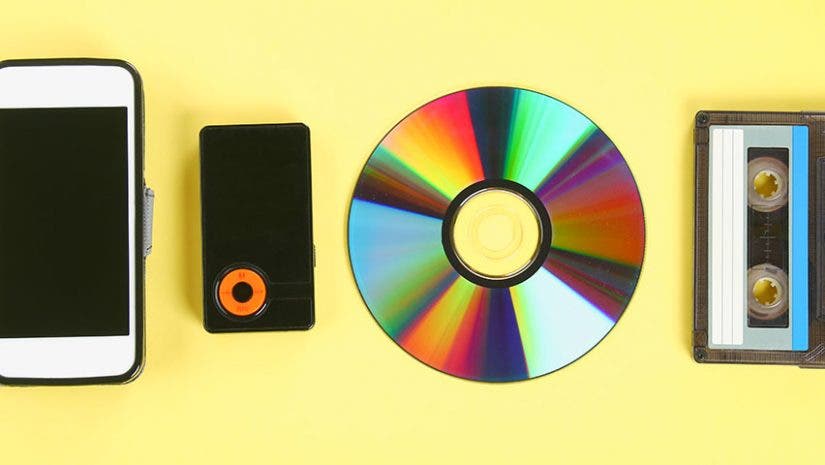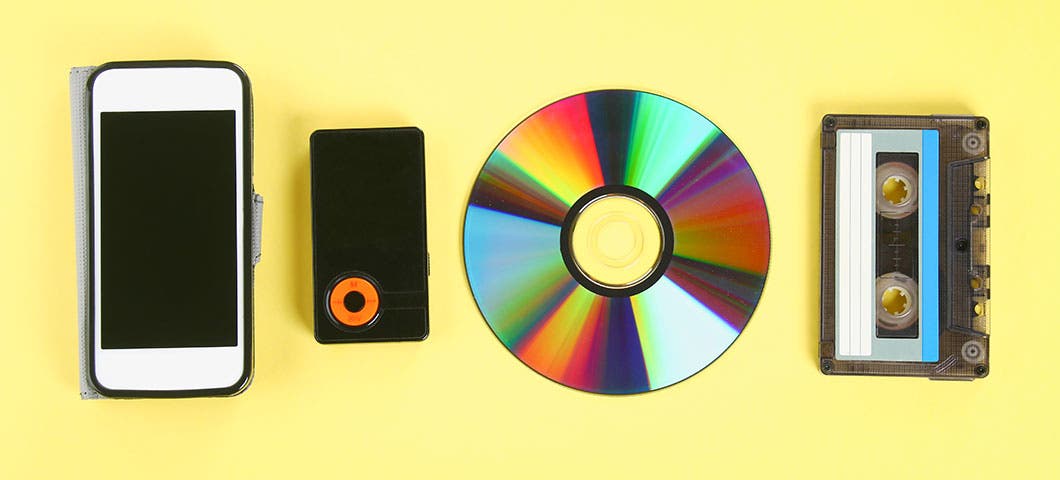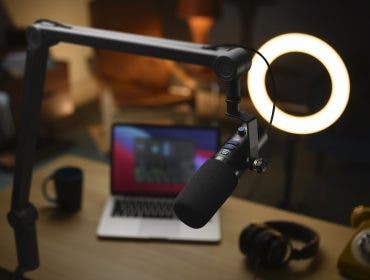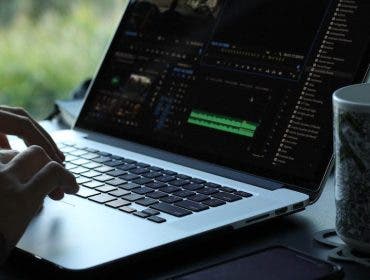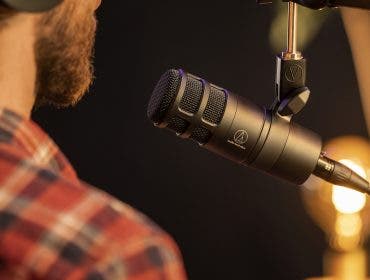Whether you’re recording a podcast, producing your own original music, preparing for a career in sound editing or sound design, undertaking some other type of endeavor related to audio production, or are just an emerging audiophile, it can sometimes help to understand the differences between analog vs digital audio.
Analog and digital audio formats are the results of two recording methods. They may not be confused with each other but often need to be explained in order for someone to understand their differences and values in audio production.
So what’s the difference between analog and digital sound? In this article, we provide their main distinctions in terms of their recording methods, bandwidth, audio quality, signal-to-noise ratio, and versatility.
Recording Methods
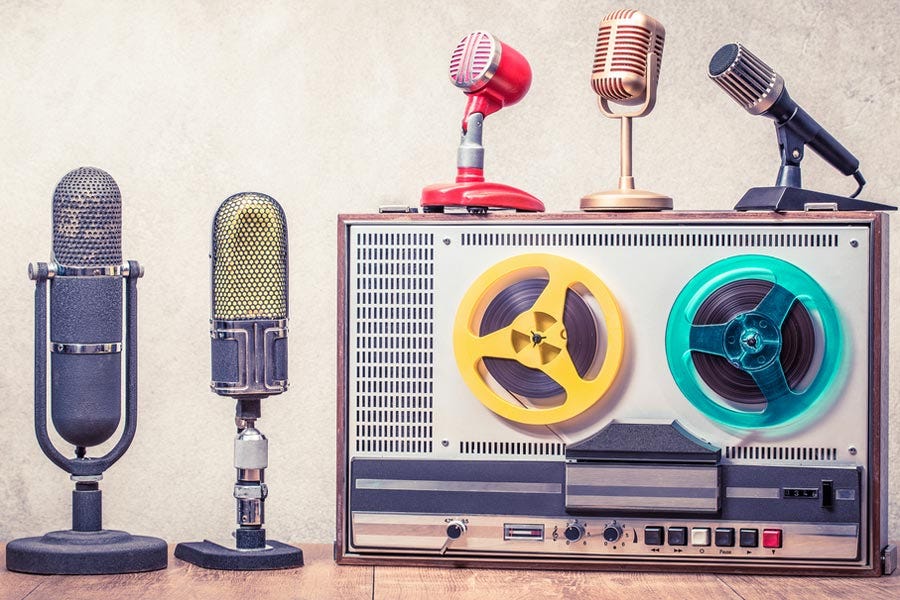
The easiest way to explain the recording processes of analog vs digital audio is to think of them as “steps” rather than two completely different methods.
Analog audio was born during the earliest technologies of sound recording. The process involves using a microphone to turn the original sound into electrical analog signals, and imprinting them directly onto analog master tapes (either large reels or cassettes) through magnetization or on vinyl records with spiral “grooves.”
Interestingly, digital audio recording also requires the step of turning sound into an electric analog signal, except it extends the process to convert that analog signal into a digital signal, a series of numbers that digital software (like those found in your computer or mp3 player) can read and reproduce. This digital format of audio is then easily copied onto compact discs, hard drives, or uploaded online for widespread playback on digital audio systems.
Audio Bandwidth
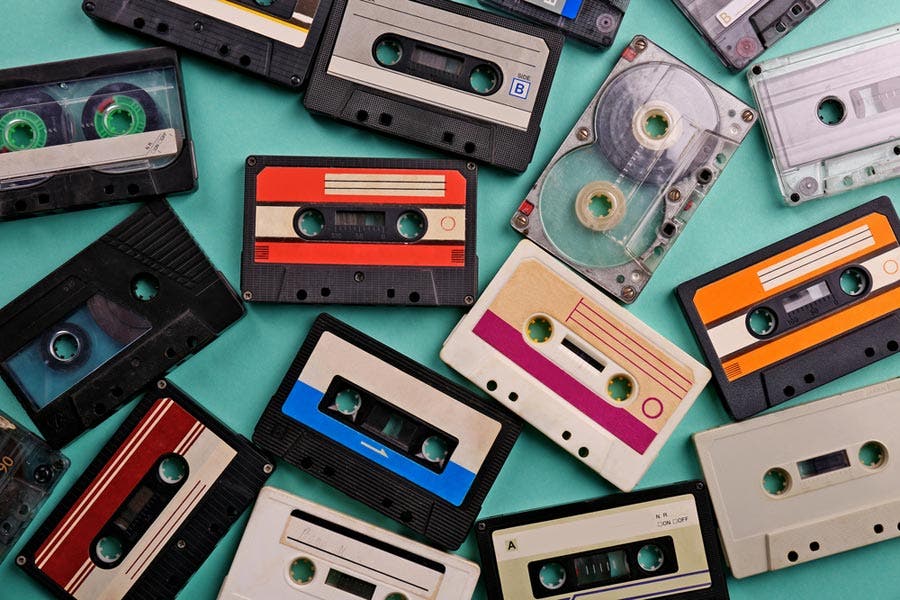
Each recorded signal can be reproduced at different resolutions for any sound system. However, the resulting sound quality greatly depends on one important factor: its bandwidth.
It’s pretty easy to understand — the higher the audio bandwidth from the original sound, the greater the audio quality, or fidelity. Similar to imaging, you can’t enlarge a low-resolution image and expect to see high-quality details in the final image.
Analog audio takes the cake when it comes to bandwidth as it is considered unlimited, which means it can be moved to higher resolutions without compromising audio quality, whereas digital recording involves limiting and giving the audio recording a fixed bandwidth. Having greater bandwidth becomes crucial when you want to increase your audio’s potential. This is especially true when it’s going to be played into high-quality audio reproduction speakers.
Signal to Noise Ratio

You may have already encountered the term or specification “signal to noise ratio (SNR)” while shopping for audio equipment. This refers to the amount of noise generated by the recorded audio signal to your speakers. In other words, it describes how much of the desired and intentional sound is present versus the unwanted sound or noise.
Instead of a colon, SNR is expressed in numbered decibels. So when a piece of audio gear has a signal-to-ratio of 100 dB, it means the level of the desired audio signal is 100 dB higher compared to the level of noise. The bigger the number, the less unwanted noise. You may be able to tell that an audio file has a bigger SNR ratio just by listening to it (with good quality monitors).
Digital recordings tend to have a greater SNR ratio, especially those with higher sampling rates. A recording’s “sample rate” is the amount of milliseconds that a digital “snapshot” is taken of a sound. The longer, or lower, a sampling rate is, the more opportunities for unwanted noise. When audio signals are digitized, the sound waves look like sets of stairs rather than smooth curves, creating or adding digital noise. Analog sound recordings are much smoother. However, there can still be occasional cracking and/or popping noises due to imperfect recordings onto vinyl or tapes.
Loss of Quality

Analog audio recordings can degrade in quality as vinyl records and cassette tapes age and are repeatedly played or copied. Meanwhile, digital signal recordings stay the same because of safer storage options that have been made available to us in the new generation. You can play and copy them endlessly, and they will maintain their original quality forever. This is unless you manipulate the file, of course.
Media Versatility

Digital audio, as with every form of digital media, is undoubtedly more versatile than its analog counterpart. While analog audio files are only played on tape decks and record players, digital files can be stored and played in many different ways—from compact CDs and dedicated CD players to today’s portable MP3 players and media hosting websites where anybody can stream or download the audio. This explains the proliferation of digital music and the significant decrease of analog recordings in recent years. However, there is still a humble market for vintage tapes and vinyl records.
Analog vs Digital Audio Frequently Asked Questions
Why do we use digital instead of analog audio?
In analog vs digital audio, digital makes it more convenient to produce and consume content. We often talk about the “democratization” of the recording industry, in that anyone with a laptop can write the next #1 hit. Before digital audio, the only option for artists was to schedule expensive studio time to commit their music to tape. Those days are long gone!
Similarly, anyone with a smart phone has access to an incredibly vast catalog of music, podcasts, and entertainment — digital audio, right in their pocket. As the world becomes more and more “connected” digitally, audio trends in the same direction.
Still, analog audio remains popular for consumers, mostly in the form of vinyl records; but any newer releases were almost certainly recorded digitally. Albeit, they did so with some help from analog audio signals going through outboard gear and back into the computer.
So when we talk about analog vs digital audio, we actually still use both. From a strictly technical perspective though, it’s uncommon to record anything fully analog to tape these days.
What is the best connection for audio?
The best and easiest connection for digital audio in home entertainment systems is HDMI. This connection conveniently carries both high-resolution audio and picture in a single cable. Simply run HDMI from the source (e.g., a gaming console) to the destination (a TV or monitor).
Depending on the equipment you have, you may need to fall back on coaxial or optical connections. Unfortunately, neither of these has the bandwidth to transmit lossless audio such as Dolby TrueHD. However, the difference in quality, compared to HDMI, is likely negligible in context. Given the choice, coaxial has a slight leg up on optical, so we’d recommend that for greater audio fidelity.
Luckily, most audio equipment these days supports HDMI, which is unbeatable for the quality and ease of use.
So, Which Method Should You Choose and When?
We’ve seen all the strengths and weaknesses of analog vs digital audio signals. By now you probably know that there is no “best” method of listening to music. Serious audiophiles and record collectors value 100% analog audio, since the warmer tones create a sort of vintage feel that is impossible to replicate.
Plenty of digital audio platforms tout how “analog” they sound. Many musicians today often record 100% analog right up until a final digital converter at the end of their signal chain. No analog platform, however, has ever tried to sound “more digital”.
For long-term and reliable storage of audio data, ease of sharing and replicating, and convenience to listen anywhere, digital audio is unbeatable. There’s a reason that cars don’t come with tape decks anymore, and portable MP3 players will not be threatened by a Walkman revival any time soon.
So, which form of audio do you prefer?
